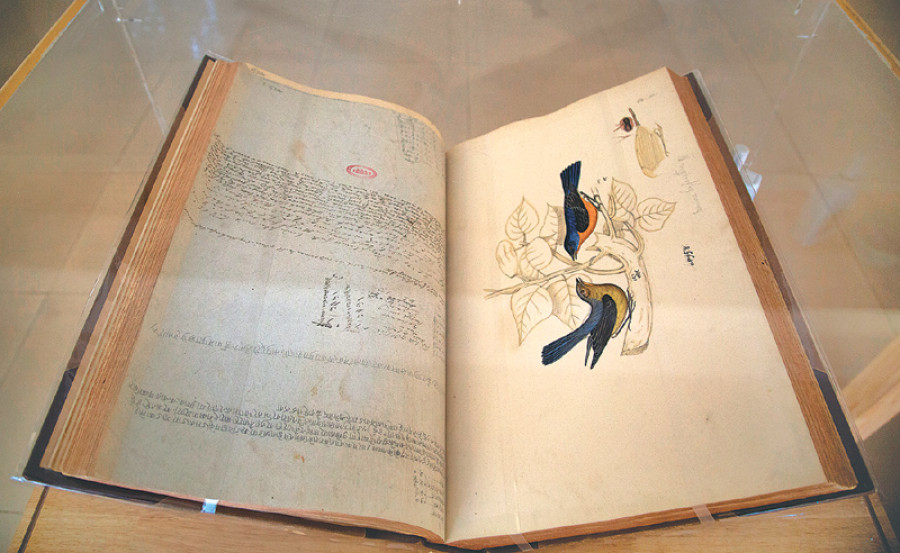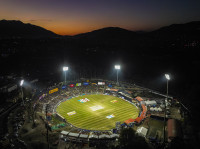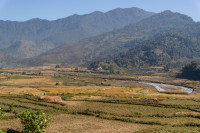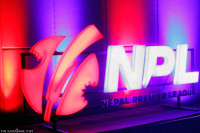Opinion
Chitrakars at triennale
I went to Siddhartha Art Gallery to see a collection of Nepali Chitrakars’ drawings of Nepali birds after receiving a mail from the art curator and director of Siddhartha Art Foundation, which is organising the month-long triennale of international art exhibitions in Kathmandu from March 26, 2017.
I went to Siddhartha Art Gallery to see a collection of Nepali Chitrakars’ drawings of Nepali birds after receiving a mail from the art curator and director of Siddhartha Art Foundation, which is organising the month-long triennale of international art exhibitions in Kathmandu from March 26, 2017. She wrote, “Chitrakars’ ancestors and Rajman Chitrakar whose drawings are included in the volume ‘Some Birds of Nepal by Brian Hodgson’...has been specially flown to Nepal for the Kathmandu Triennale through the patronage of Turkish Airlines and is on loan from the Natural History Museum in London.”
These works, she rightly said, “serve as a testament to the skill of the Chitrakar artist who worked closely with Brian Hodgson.” She gave me another piece of information about the publication of a glossy expensive book entitled Nepali Paintings through the Ages written by art historian and painter Madan Chitrakar on the occasion of the triennale. I could buy the book at Patan Museum. It is mainly a collection of paintings, executed by the Chitrakars, as said in the book.
Problem of signature
But one problem with such works is that the painters’ names do not feature in them. Except some paintings which are obvious, like those of Bhajuman, Dirghaman, Rajman and in later times Tej Bahadur, the issue of signature remains a problem with Chitrakars’ works. Sangeeta Thapa has touched on that problem in her introduction, and Madan Chitrakar has mentioned the great legacy of the Chitrakars and written important annotations.
The book presents many unseen paintings culled from the holdings of the Chitrakars, the National Art Museum and others. A similar book should include the works of the doyen of what I call the contact-zone paintings, Chandra Man Maskey, because he links the Chitrakars’ heritage to other paintings, though he was not a Chitrakar himself.
Appended history
Incidentally, Chandra Man Maskey and Tej Bahadur Chitrakar were sent to Calcutta together for training in modern art by Chandra Shumsher Rana in 1918. These two artists brought the Nepali paintings into modern times through their dedication and talent. I appreciate this book which is well edited and richly represented.
Joint endeavours of people like Madan Chitrakar, an art historian who has access to the Chitrakar collections and families, and Sangeeta Thapa, who is a great art curator and connoisseur, can be instrumental in producing more work like this. It is difficult for the viewers to see all the exhibitions of the triennale scattered all over the places because of the worsening road conditions, madly honking vehicles and gridlock.
Art, especially painting, runs into the family of the Chitrakars. The literal meaning of the family title ‘Chitrakar’ is picture maker, or painter. The legacy of these artists can be seen in the visual projection of hegemony and entertainment, culture and family passions, rituals and emotional performativity. Chitrakars were court painters as well as free individuals who painted their emotional relationship with the deities and human beings who live in a familiar milieu created by the members of the clans and the society they were a part of. No book is written about their lineage, the legacy the artists bequeathed to their progenies, and information about their paintings detailing their styles, patterns of emulations and the dates and contexts when they executed their paintings. Their history is often appended to the ruling families’ history. For that reason, their history and their arts should be sought through these associations.
Historicity of the arts
One such occasion came when the British historian John Whelpton was translating the Nepali document describing the European visit in 1850 of the first Rana prime minister Jung Bahadur into English. He needed some visual information. We knew one very interesting man, MK Mussorie Shumsher Rana, named after the place where his father, the erstwhile Rana prime minister Dev Shumsher, was exiled by his brother Chandra Shumsher in 1901. One winter day in 1983, MK invited John and I over to his residence in Thapathali to show his collection of paintings. Among them there were Bhajuman’s portraits of Jung, his father and brothers. We photographed some and have included these photographs in the first edition of John’s book Jang Bahadur in Europe (1983).
We were also invited by one Rana family that lived close to MK’s house, where we were shown a rare painting of a ship that had sailed to Britain with Jung. It was a somewhat sprawling coloured image of a sail that was more suggestive than accurate. But that painting had some character, and the owner said it was painted by a Chitrakar. Bhajuman’s name was not written anywhere, which makes it difficult to uncover the signature on any Chitrakar paintings. This painting was also photographed and featured in John’s book, in black and white.
The above context evokes the historicity of the arts. The book that has travelled all the way from the Natural History Museum, London, sits in the middle of the ground floor of Siddhartha Art Gallery inside a case. A colourful and beautiful bird draws the visitors’ attention. One piece of information given by the late Harihar Raj Joshi in a booklet entitled “Rajman Singh Chitrakar” that he produced in 2005 is worth citing here. He says, out of Hodgson’s collection “Eighteen hundred sheets of mammals and birds went to the British Museum. They are now divided between the Natural History Museum and the London Zoological Society”.
In any case, two very important books about Brian Hodgson in Nepal (1820-43) and in Darjeeling (until 1958), which were given to me for review in an open lecture at the Book Exhibition by Madhab Lal Maharjan of Mandala Book Point, have references to the works of Rajman Singh and other Chitrakar artists, who were involved in the production of the images in the book exhibited at the triennale. Rajman’s drawings have, very importantly, captured the moments of human emotions; they show the relationship of the Western residents with the Nepali space by using architecture and humans as the medium.
Let us pay tribute to Rajman Singh, the great artist, and his fellow Chitrakars, on the occasion of the triennale 2017.




 10.12°C Kathmandu
10.12°C Kathmandu









